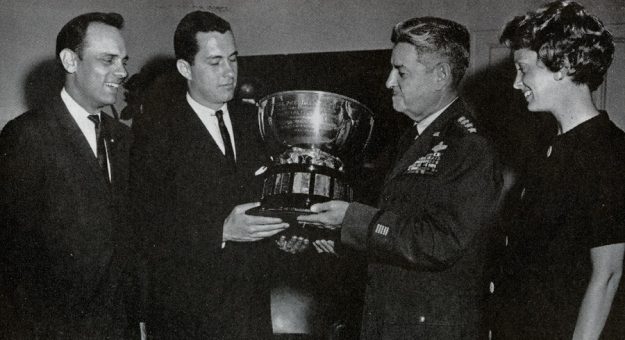Snarling through the countryside around the Finger Lakes of upstate New York, the drivers clawed at the lead, their circuit encompassing public roads in and around the village of Watkins Glen. It was the kind of open-road race that still happened a fair amount in 1952.
Then, Fred Wacker attempted to take second place away from John Fitch and his Allard-Cadillac’s cycle-fendered wheels brushed against the mass of spectators packed against the road’s edge. A dozen onlookers were injured and one, a 12-year-old boy, lost his life. Organizers stopped the race.
Metaphorically, the race stoppage could easily have also stood for the immediate future of sports car racing in the United States at that moment. The state of New York refused to issue permits for future street races at Watkins Glen. Far more consequential was Lloyds of London’s decision to yank its insurance coverage for the races.
Enthusiasts, many of them members of the Sports Car Club of America, were aghast.
Sports car competitions on other courses around the country, both closed-off roads and disused air bases, suddenly saw their own venues in immediate, existential jeopardy. No insurance, no permits, no races.
An unlikely savior, who was accustomed to accomplishing very big things with just the crackling authority of his voice, swaggered into view. In 1952, Curtis Emerson LeMay was already a firmly established national figure. As a concrete-fisted commanding general, LeMay had been the architect of the massive daylight bombing raids that smashed Germany’s industrial heartland and collaterally, incinerated its major cities.
It earned him sobriquets such as “Bombs Away LeMay” and “Iron Butt,” and also harshly terminated the Reich’s ability to wage war. LeMay was a man who got things done, immediately, and didn’t much care what anyone thought about his methodology. Later, he was widely seen as the inspiration for the unhinged general Buck Turgidson in “Dr. Strangelove,” and in a short-lived political career, he memorably declared that nuclear weapons ought to be deployed against North Vietnam.
Aside from all this, LeMay was also a die-hard car guy. And like tens of thousands of less-elaborately decorated veterans, LeMay had been exposed to British sports cars of all stripes while the Eighth Air Force incessantly drilled for its assault on Hitler from Royal Air Force bases, particularly across the reaches of East Anglia.
LeMay was a command pilot, but his interest in mechanical things ran far deeper. Born in Columbus, Ohio, in 1906, LeMay studied civil engineering at Ohio State and joined what was then the Army Air Corps in 1928, graduating from flight training at Kelly Field in Texas.
Given a direct commission as an Army officer, LeMay was an early, and vocal, advocate for the emerging role of airpower in warfare. LeMay was one of the first to pilot the legendary B-17 after it was introduced by Boeing and also one of the first aircrew members trained on the new Norden bombsight, which LeMay’s crews put to prolific use in the skies above Germany.
In his 1965 autobiography, LeMay fondly remembered piecing together a car of his design while billeted for Army training in western Pennsylvania. In 1942, he was given command of the 305th Bombardment Group, and through incessant training, developed the bomber formations and tactics that became standard practices in the Allied air campaign. The group deployed to England and launched daylight precision strikes against industrial Germany in 1943, including the crucial double raids on aircraft and bearing plants in Schweinfurt and Regensburg.
They were two of the most heavily defended strategic targets in Europe and LeMay lost 24 of his 116 attacking bombers in the strike, but at the end of the day, the Messerschmitt aircraft plant in Regensburg and the VKF ball-bearing factory in Schweinfurt were reduced to flaming rubble.
The Eighth Air Force was later ordered to the Pacific theater and made preparation to bomb Japanese targets ahead of an anticipated U.S.-led invasion, which ended with the surrender of Japan following the bombings of Hiroshima and Nagasaki.
When the U.S. Air Force was established as a separate service branch following World War II, LeMay was given command of its operations in Europe. It was around the same time that the British garageman Sydney Allard began building his primitive sports cars. LeMay saw one, liked it, bought one for himself and stuffed his Allard K with one of Cadillac’s new overhead-valve, high-compression V-8s.
To continue reading, advance to the next page.
